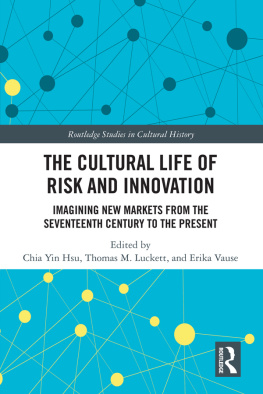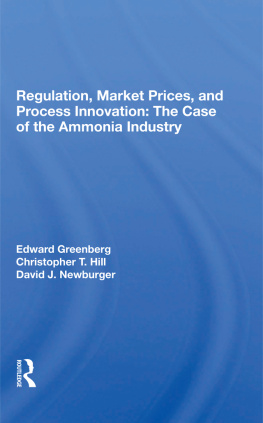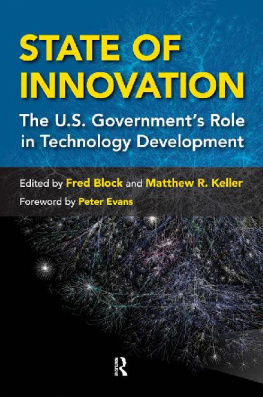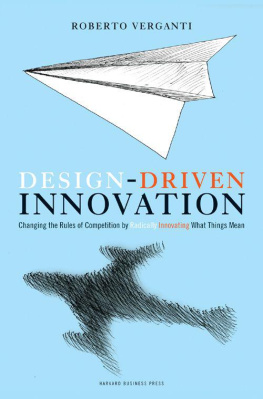The Cultural Life of Risk and Innovation
How did innovation become something to strive for, an end in itself? And how did the market come to be thought of as the space of innovation? This edited volume provides the first historical examination of how innovations are conceived, marketed, navigated, and legitimated from a global perspective that highlights contrasting experiences. These experiences include colonial projecting in the Dutch New Netherlands, trust networks in the early U.S. securities market, female investors during the Financial Revolution, life insurance in nineteenth-century France, bubbles and trusts in 1920s Shanghai, government regulation of the pre-Revolutionary stock market, and the checkered success of todays Bitcoin technology. By discussing these diverse contexts together, this volume provides a pathbreaking reconsideration of market and business activities in light of both the techniques and the emotional vectors that infuse them.
Chia Yin Hsu is Associate Professor of History at Portland State University, USA.
Thomas M. Luckett is Associate Professor of History at Portland State University, USA.
Erika Vause is Assistant Professor of European History at St. Johns University, USA.
Routledge Studies in Cultural History
Transatlantic Encounters in History of Education
Translations and Trajectories from a German-American Perspective
Edited by Fanny Isensee, Andreas Oberdorf, and Daniel Tpper
The Humanities in Transition from Postmodernism into the Digital Age
Nigel A. Raab
Negotiating Memory from the Romans to the Twenty-First Century
Damnatio Memoriae
Edited by ivind Fuglerud, Kjersti Larsen, and Marina Prusac-Lindhagen
Cultures and Practices of Coexistence from the Thirteenth Through the Seventeenth Centuries
Multi-Ethnic Cities in the Mediterranean World, Volume 1
Edited by Marco Folin and Antonio Musarra
Controversial Heritage and Divided Memories from the Nineteenth Through the Twentieth Centuries
Multi-Ethnic Cities in the Mediterranean World, Volume 2
Edited by Marco Folin and Heleni Porfyriou
History as Performance
Political Movements in Galicia Around 1900
Dietlind Hchtker
The Cultural Life of Risk and Innovation
Imagining New Markets from the Seventeenth Century to the Present
Edited by Chia Yin Hsu, Thomas M. Luckett, and Erika Vause
For more information about this series, please visit: www.routledge.com/Routledge-Studies-in-Cultural-History/book-series/SE0367
First published 2021
by Routledge
52 Vanderbilt Avenue, New York, NY 10017
and by Routledge
2 Park Square, Milton Park, Abingdon, Oxon, OX14 4RN
Routledge is an imprint of the Taylor & Francis Group, an informa business
2021 Taylor & Francis
The right of Chia Yin Hsu, Thomas M. Luckett, and Erika Vause to be identified as the authors of the editorial material, and of the authors for their individual chapters, has been asserted in accordance with sections 77 and 78 of the Copyright, Designs and Patents Act 1988.
All rights reserved. No part of this book may be reprinted or reproduced or utilised in any form or by any electronic, mechanical, or other means, now known or hereafter invented, including photocopying and recording, or in any information storage or retrieval system, without permission in writing from the publishers.
Trademark notice: Product or corporate names may be trademarks or registered trademarks, and are used only for identification and explanation without intent to infringe.
Library of Congress Cataloging-in-Publication Data
A catalog record for this book has been requested
ISBN: 978-0-367-36150-1 (hbk)
ISBN: 978-0-429-34416-9 (ebk)
Typeset in Sabon
by Apex CoVantage, LLC
Contents
ERIKA VAUSE, CHIA YIN HSU, AND THOMAS M. LUCKETT
PART I
Imagining New Markets: Perils and Desires
EVA BRUGGER
NICCOL VALMORI
PART II
Navigating Markets: Strategies and Affects
AMY FROIDE
ERIKA VAUSE
BRYNA GOODMAN
PART III
Controlling Markets: The State and Its Discontents
T. J. A. LE GOFF
ENRICO BELTRAMINI
Guide
Earlier versions of the research published in this volume were presented and discussed at the Third Biennial Richard Robinson Business History Workshop: Risk, Honor & Innovation: Imagining New Markets, which convened at Portland State University in Portland, Oregon, on May 2426, 2018. The workshop was made possible by a bequest from the late Richard J. Robinson, Professor Emeritus of Management and former Chair of Management in the PSU School of Business. We wish to honor the memory of Professor Robinson for his generosity and commitment to historical scholarship.
We wish also to thank all of the participants in the Richard Robinson Business History Workshop, including those not represented in this volume, for their comments and lively exchange of ideas, and in particular Franois Velde, senior economist and research advisor at the Federal Reserve Bank of Chicago, who launched the workshop with his keynote address on The Mississippi Bubble of 1720 and Frances Missing Revolution.
Erika Vause, Chia Yin Hsu, and Thomas M. Luckett
To participate in the modern economy is to live with constant exposure to novelty and innovation. New products, new technologies, and entirely new markets for goods and services emerge at a breathtakingly quick pace. In the words of economist Joseph Schumpeter, the market is driven by the perennial gale of creative destruction, which incessantly revolutionizes the economic structure from within, incessantly destroying the old one, incessantly creating a new one. Consumers and producers alike are constantly adapting their strategies, behaviors, preferences, and values to this endless succession of novelties.
Yet even as we have come to anticipate the relentless pace of this ingenuity, we often overlook the radical effects that the introduction of new goods and services has had on the cultural and social fabric of communities throughout modern history. The very terms we use for innovation, such as dynamism, disruption, and revolution, imply the possibility of violence and conjure the darker side of this apparently unending fascination with growth and discovery. Embracing novelties often necessitates not only breaking with older products and practices but also adapting or abandoning entire sets of values, beliefs, and customs that had been tied to them. What do these social and cultural transformations look like at a concrete level? How do entrepreneurs, promoters, and inventors persuade often skeptical publics of the value of their innovations? This has not always been an easy sell. Indeed, although innovation and growth may now be applauded as general goals, this hardly means that, historically, every imagined possibilityevery new product, new idea, or new business venturewas successful. For those attracted by the potential of innovations, the risks must be carefully weighed, even as the novelty of these ventures renders the future uncertain. Entrepreneurs and investors must consider whether the profits to be gained will outweigh the likelihood of loss, in terms of both financial and social capital. Consumers must be convinced that the invention will live up to its promise and not turn out to be either a deliberate fraud or a disappointing failure. States and other governing bodies must decide what dangers, if any, these new products pose and what safeguards should exist to protect the public. For all parties, these evaluations must be calculated in an atmosphere of uncertainty.










